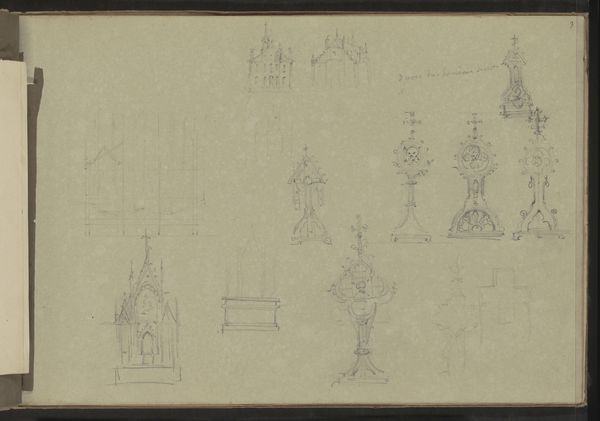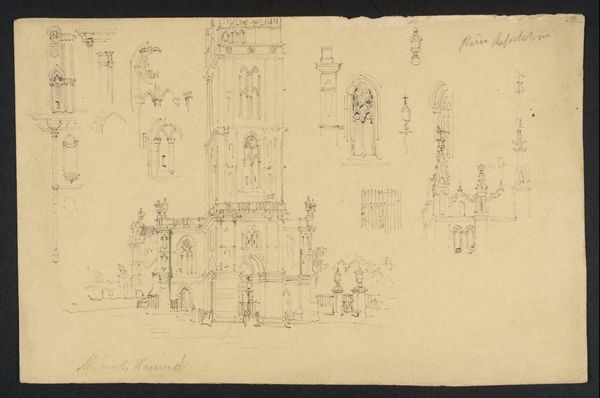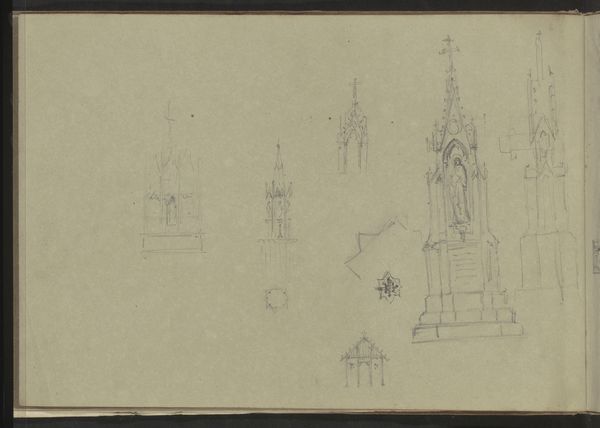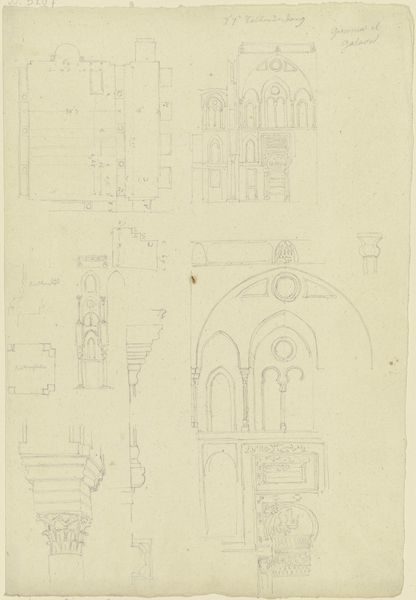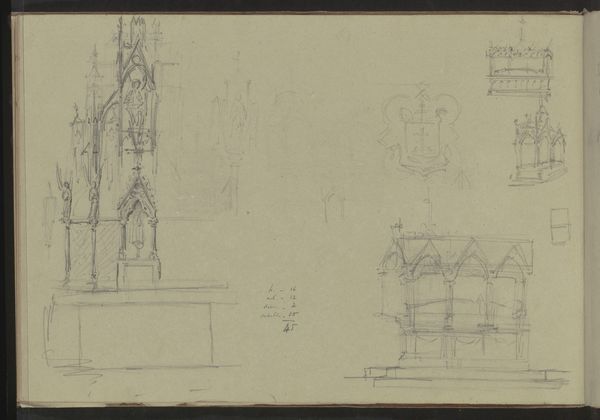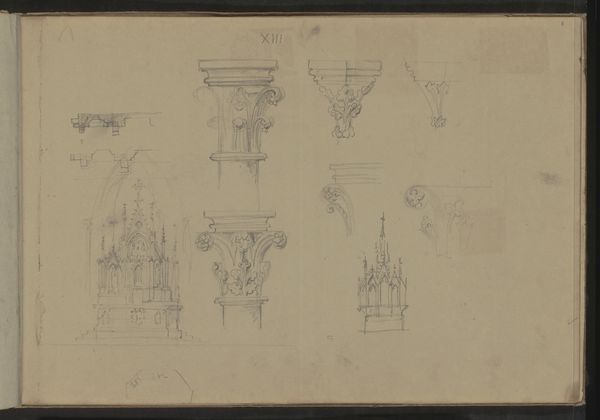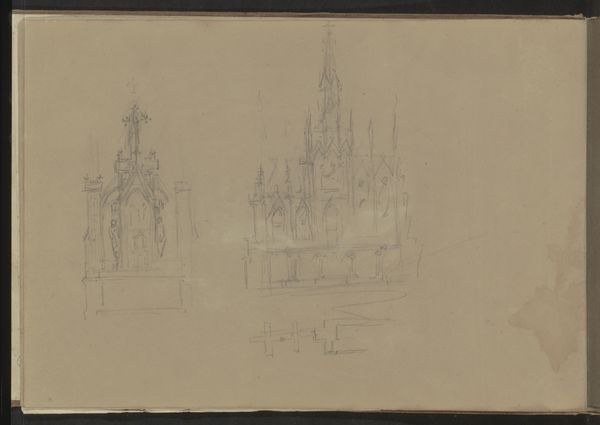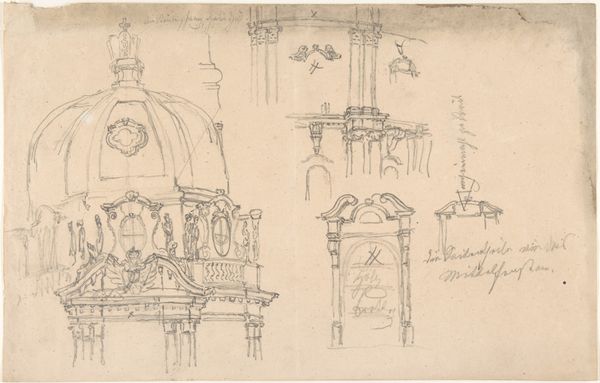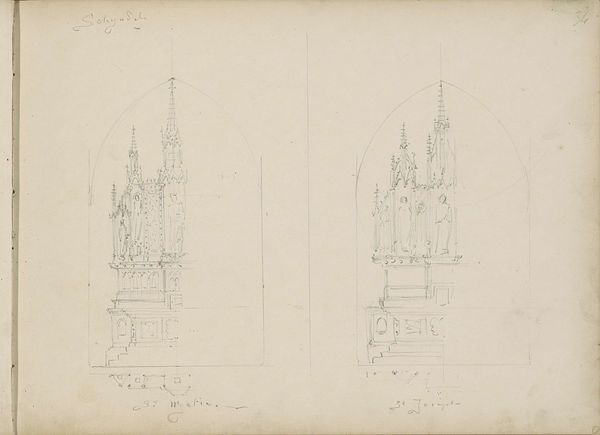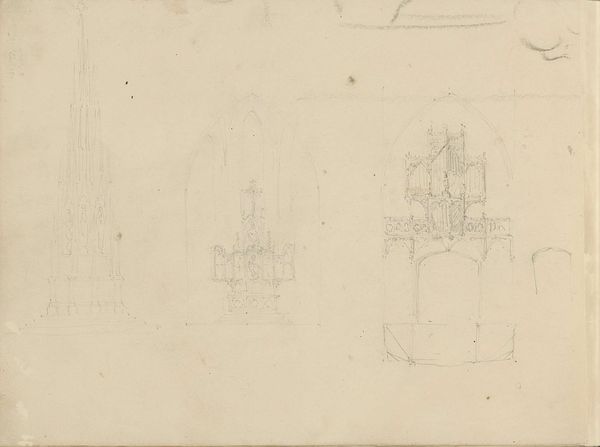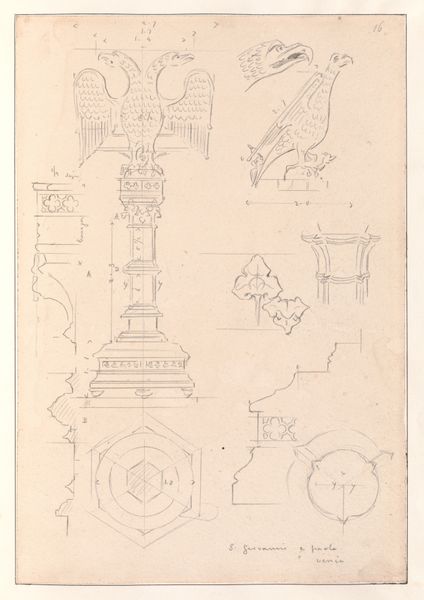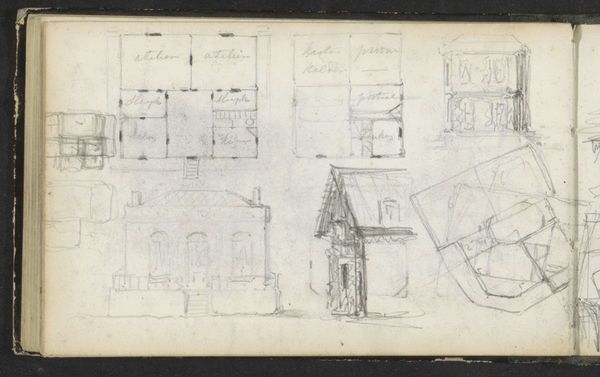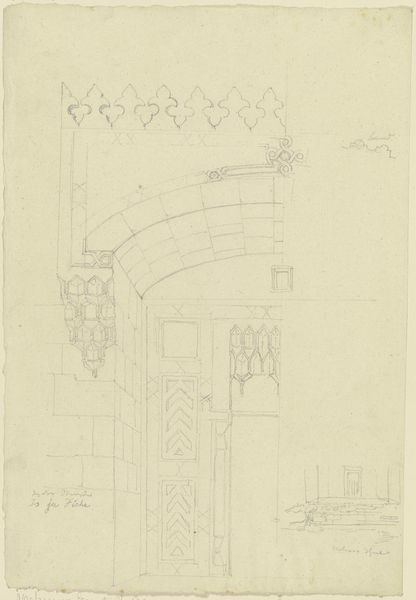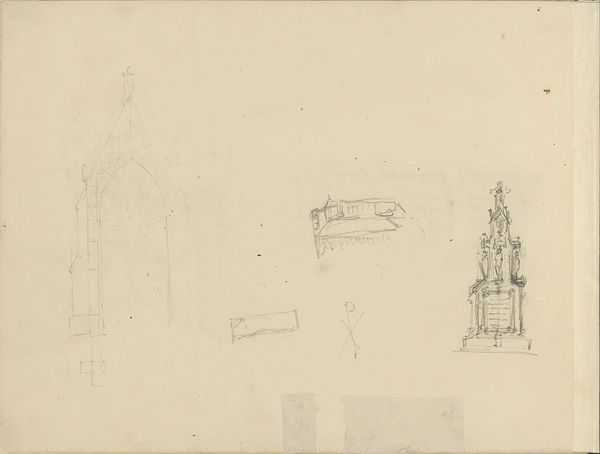
Studieblad, onder andere met ornamenten, kerkarchitectuur en een godslamp 1837 - 1921
0:00
0:00
drawing, pencil, architecture
#
drawing
#
medieval
#
form
#
geometric
#
pencil
#
line
#
architecture
Copyright: Rijks Museum: Open Domain
Editor: This drawing, “Studieblad, onder andere met ornamenten, kerkarchitectuur en een godslamp”, made between 1837 and 1921 by Pierre Joseph Hubert Cuypers, is currently held at the Rijksmuseum. Composed using pencil, it gives the impression of looking directly into the sketchpad of an architect. So, what’s your read on this sheet of studies? Curator: Ah, yes! It’s a delicious glimpse into Cuypers’ mind, isn’t it? A flurry of ideas captured with such delicate lines. To me, it speaks of his deep engagement with medieval forms. One can almost imagine him poring over illuminated manuscripts or Gothic cathedrals and quickly capturing notes for his own architectural visions. Don't you think it evokes a sense of yearning for the past, a search for authentic architectural language? Editor: I hadn’t thought of it as a yearning. More like collecting data. It feels so functional, as if the drawings are purely utilitarian. But your “yearning” is interesting… is that why he focuses so intently on ornamental details rather than structural plans? Curator: Precisely! The ornaments *are* the language here. It’s through the geometry and details that the building would speak. Consider the lamp. How that one intricate drawing radiates and commands your attention. And for me, they resonate on a deeper level; they conjure images of faith, history, a time when craftsmanship was closer to prayer. And aren't drawings, in their essence, whispers of possibility? Editor: I guess they are! I’m coming around to that “yearning” interpretation now. Seeing this less as just an instruction manual. The conversation helped flesh it out. Thank you! Curator: My pleasure! Sometimes all it takes is finding the music *within* the lines, right?
Comments
No comments
Be the first to comment and join the conversation on the ultimate creative platform.
